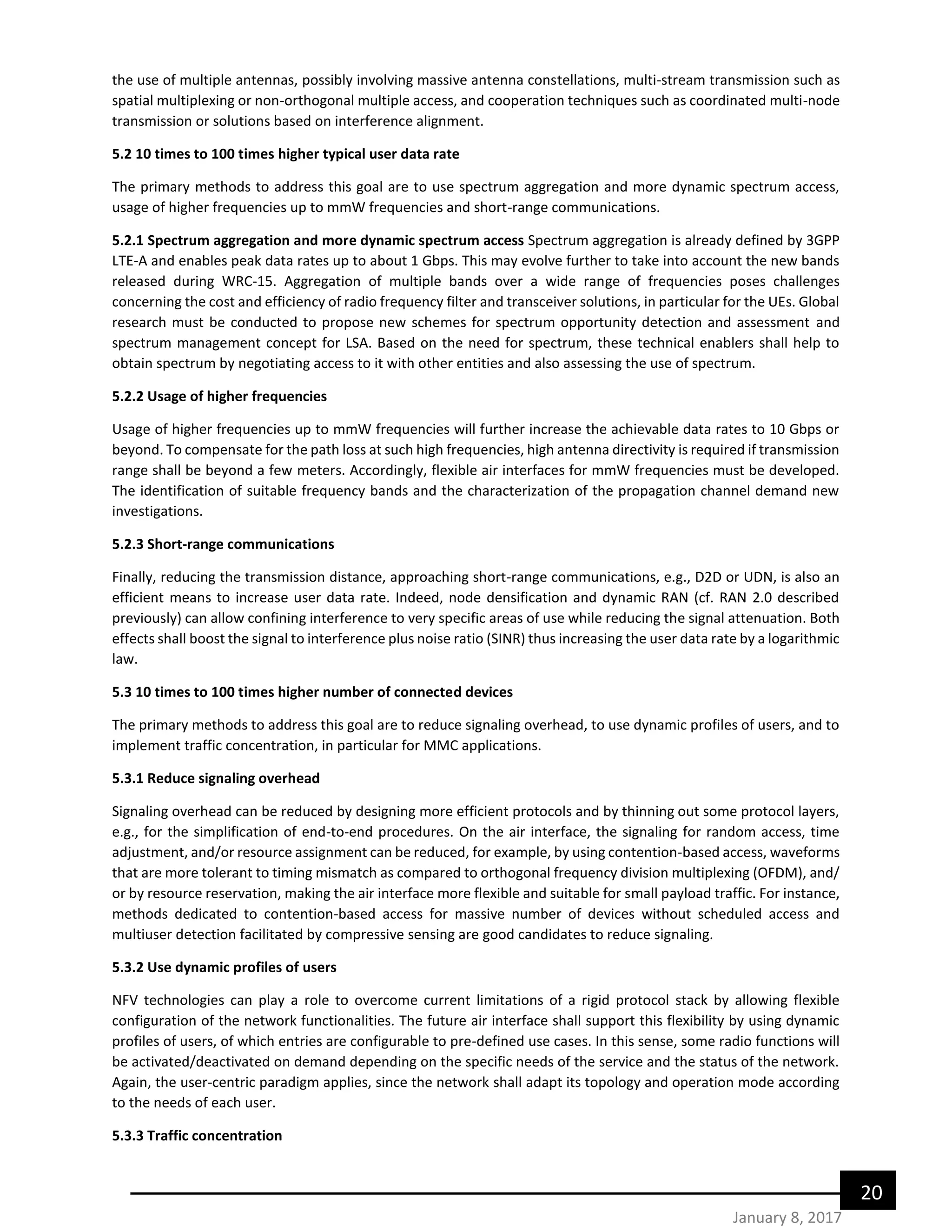The document provides an overview of the network architecture of 5G mobile technology. It discusses that 5G will require fundamental changes to the network architecture to meet goals of high data rates, capacity, and low latency. This includes employing technologies like dense networks, massive MIMO, and mmWave spectrum. The 5G network architecture will be more flexible and intelligent through the use of software defined networking, virtualization, and cloud computing. It will also need to support different service types like enhanced mobile broadband, massive machine-type communications, and ultra-reliable communications. Research challenges remain in developing new air interface designs, signaling protocols, and spectrum sharing to fully realize the potential of 5G networks.






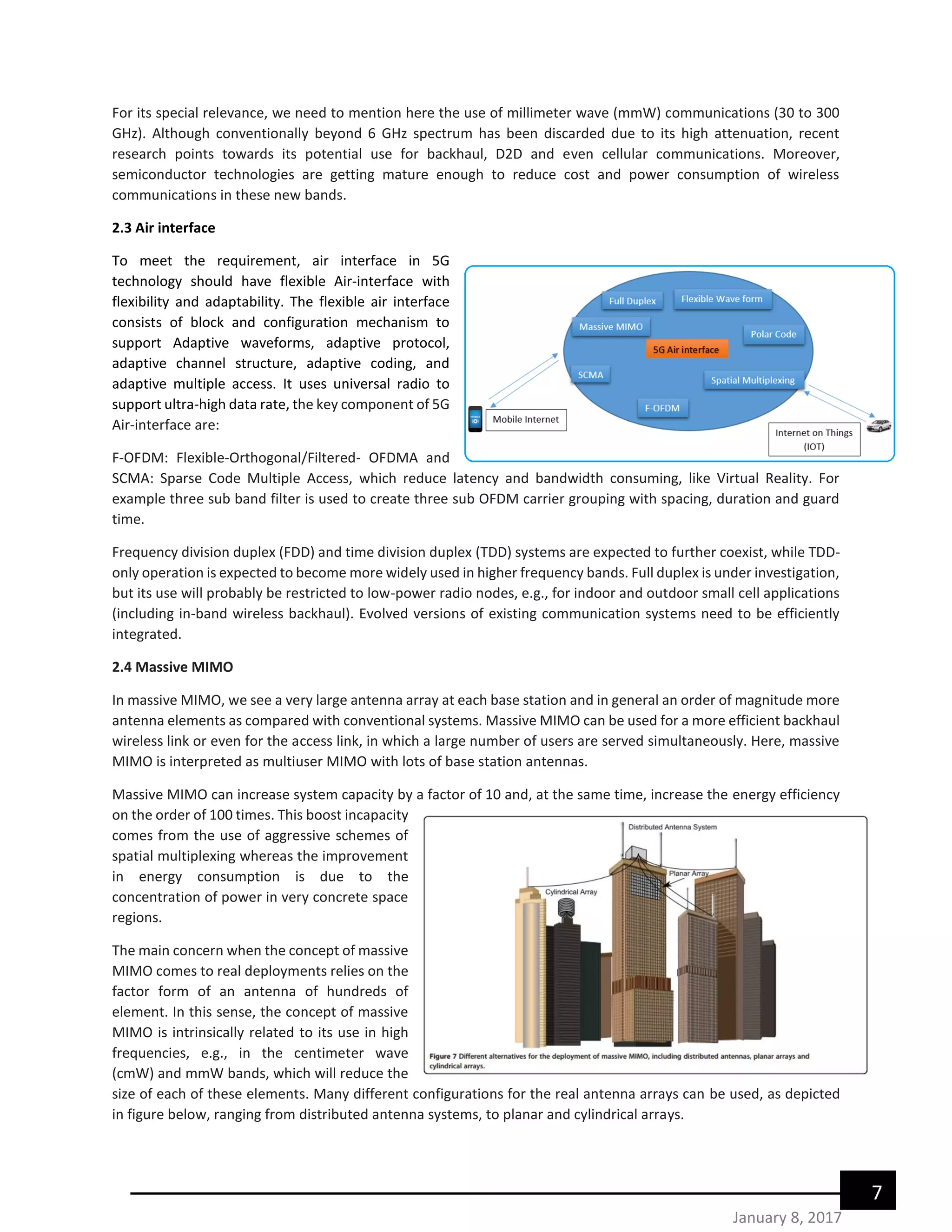

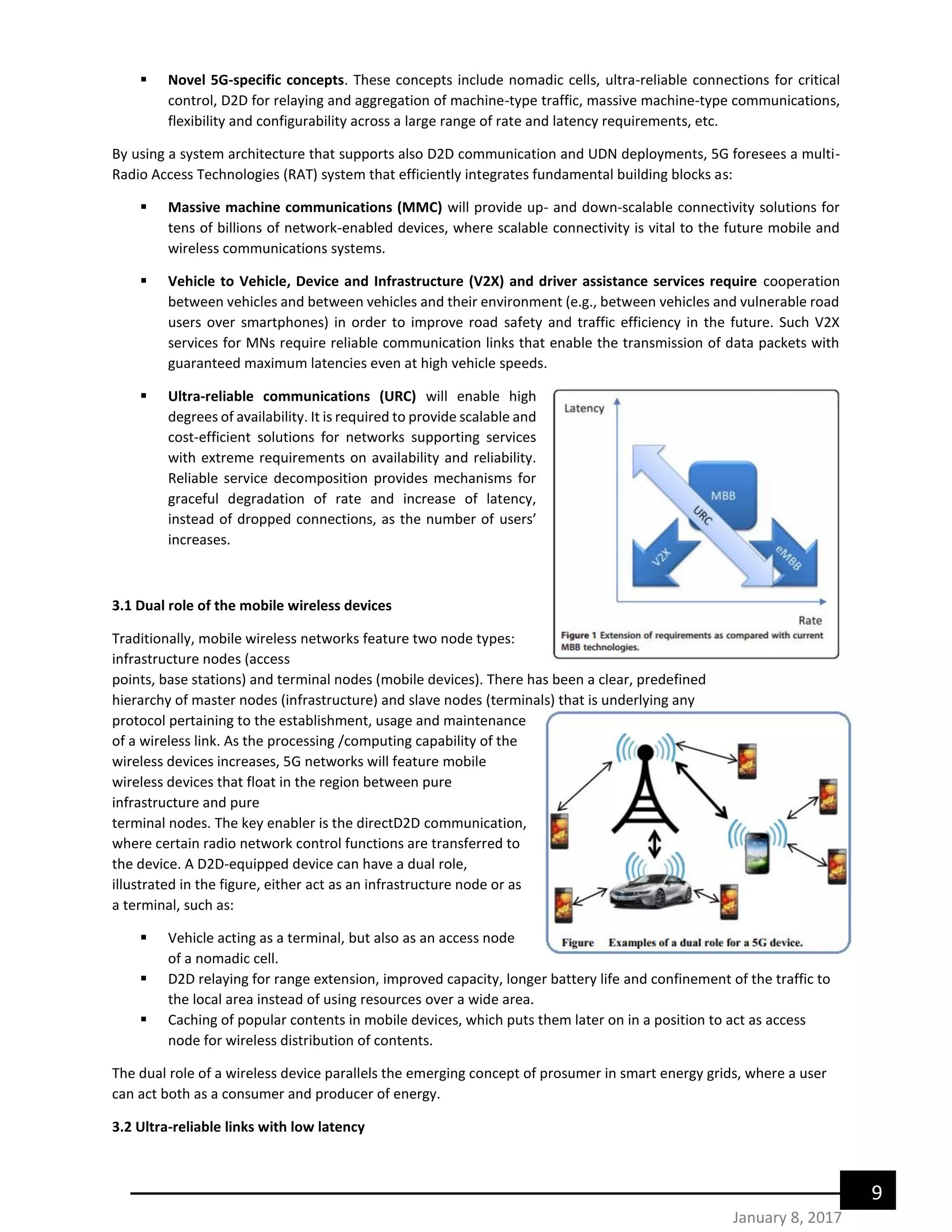
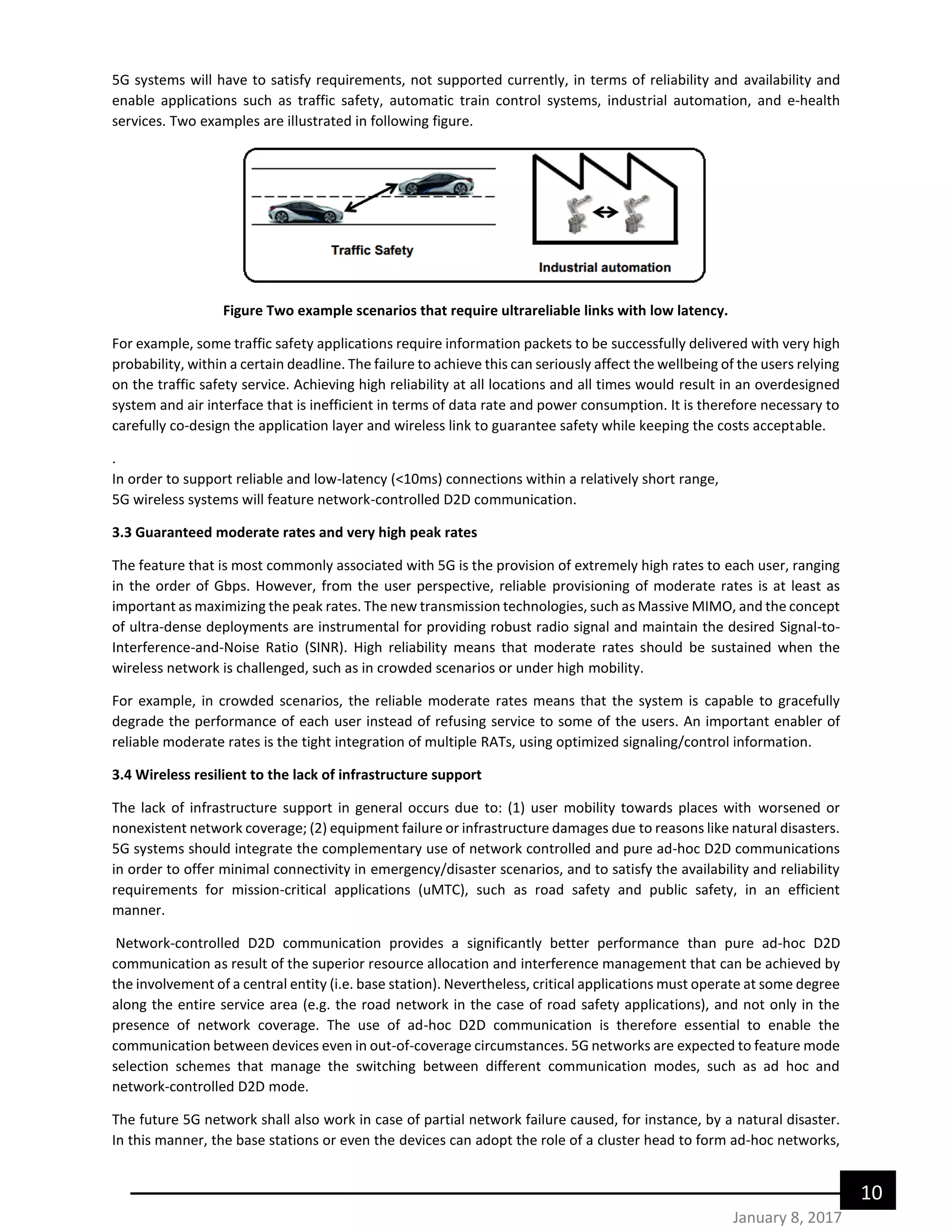
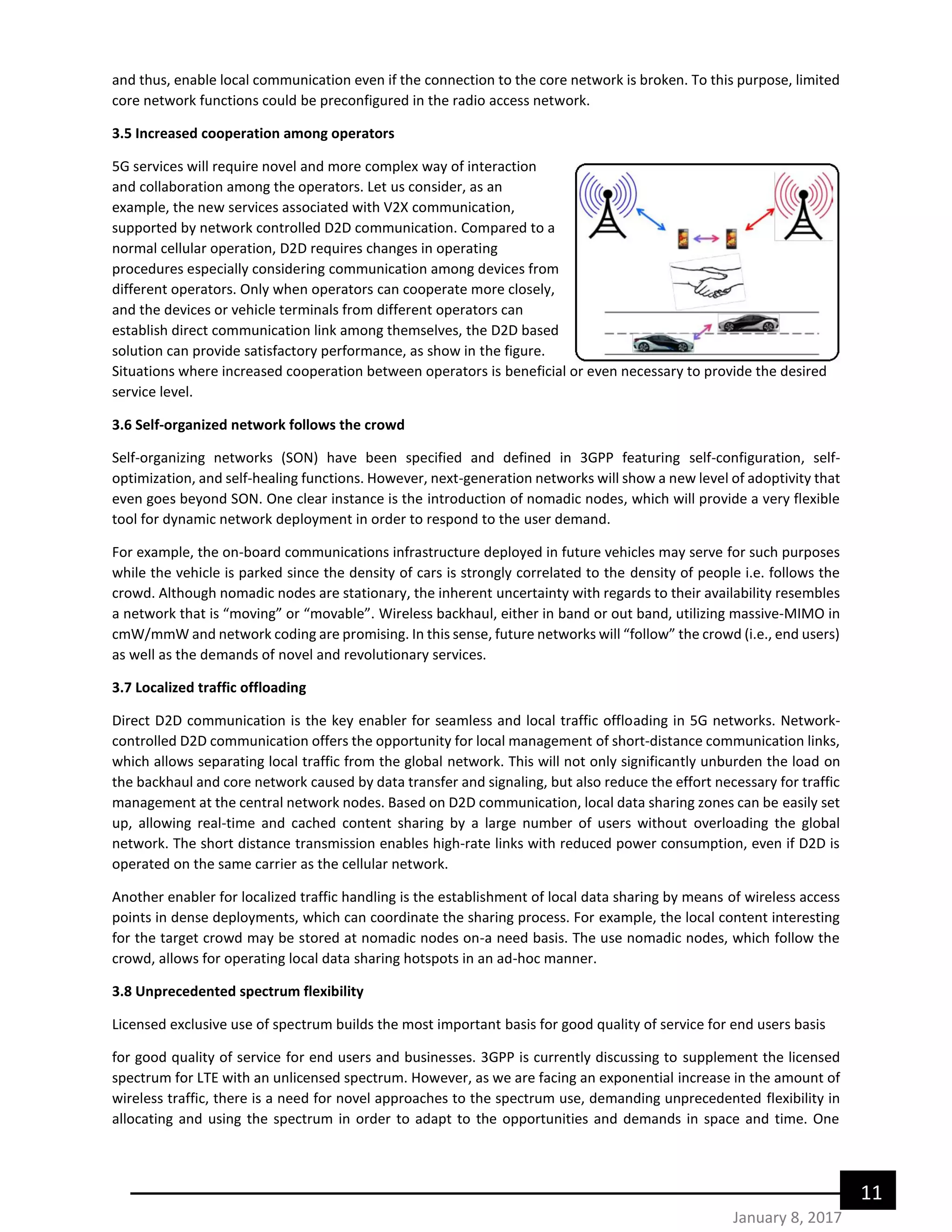

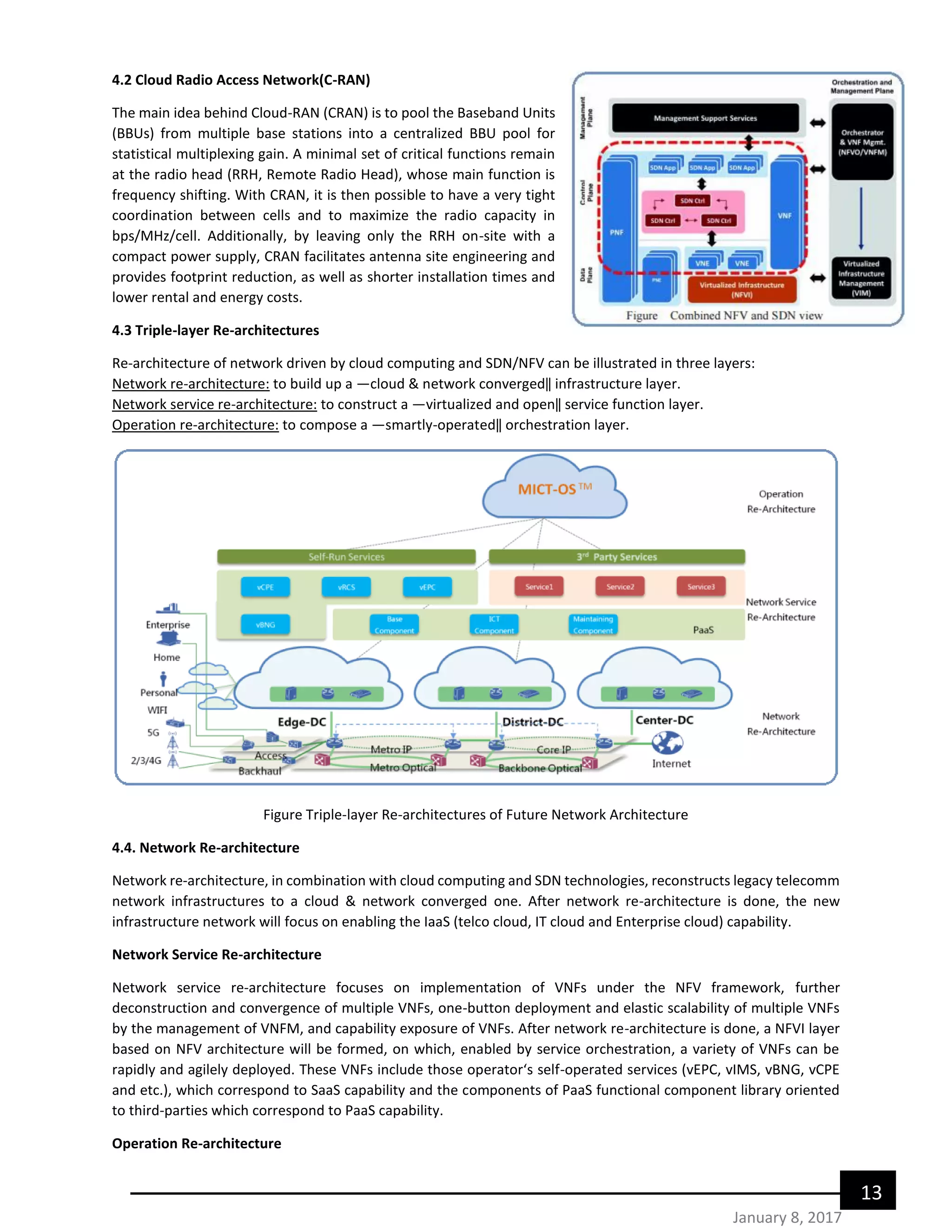




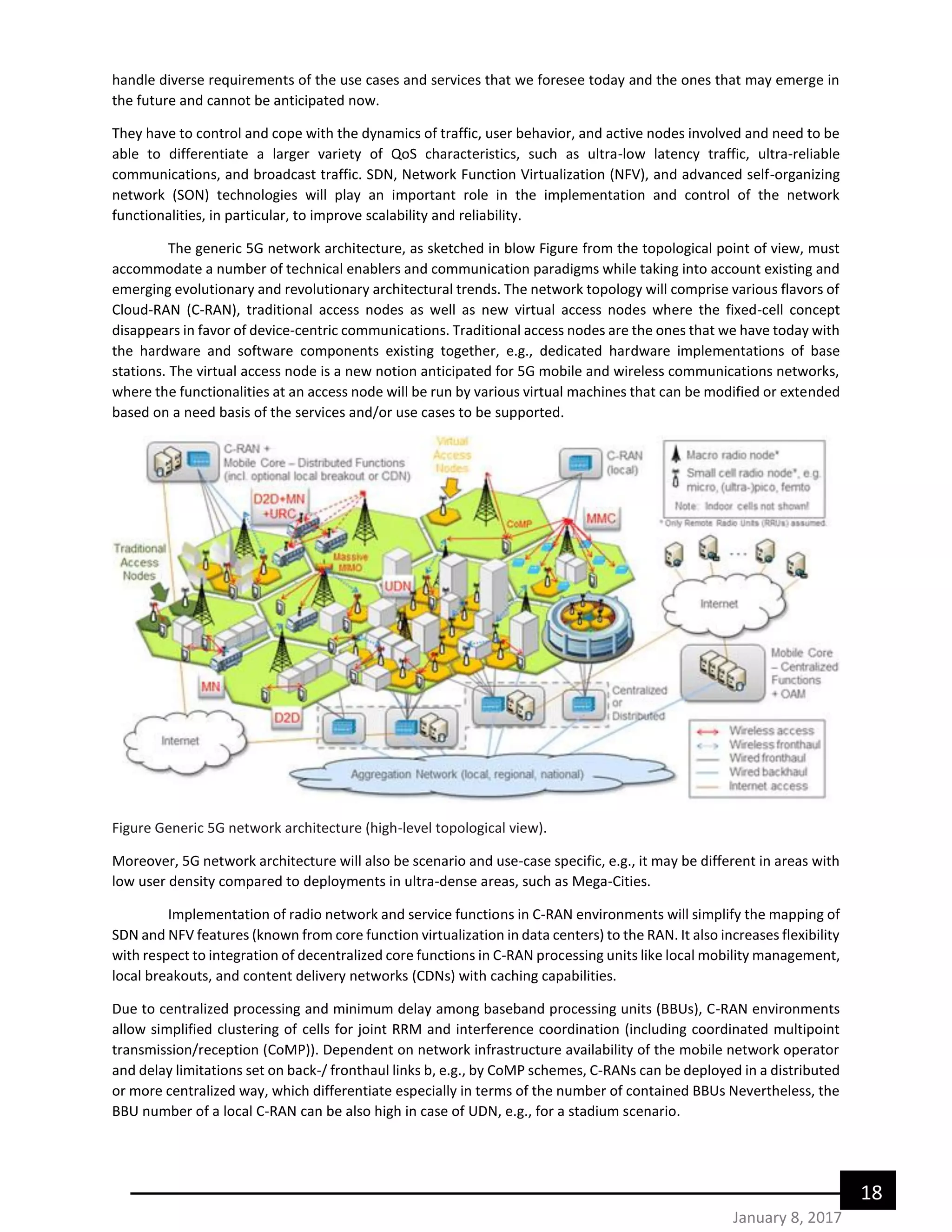
![19
January 8, 2017
Figure Generic 5G network architecture (high-level functional/logical view).
A first consideration of the main functional building blocks to appear in the 5G RAN architecture from the logical
point of view is shown in Figure 9. Flexibility shall enable a dynamic configuration of the necessary network
functionalities in order to fulfill the requirements of a target service. This can necessitate new or tailored
functionalities that will be made available on-demand based on the capabilities, such as processing and memory, of
the network elements. On this basis, the
5. Meeting the Goals for 5G – Research challenges
5.1. 1,000 times higher mobile data volume per area The primary methods to address this goal are to use more
frequency spectrum, to use more network nodes, and to enhance network performance and spectral efficiency.
5.1.1 Use more frequency spectrum Both higher data rates and higher data volume require access to more
frequency spectrum for mobile communications. As stated before, in WRC-15, it is expected that clearly more
spectrum will be released for mobile communications. This new spectrum lies in the frequency range between 300
MHz and 6 GHz. However, for the future 5G system, these new spectrum opportunities will not be sufficient.
Additionally, the release of new spectrum in the mmW bands was postponed to WRC-18.
5.1.2 Use more network nodes
Densification of networks by deploying more nodes is already applied today with femto or pico cells providing local
connectivity for increased capacity in addition to the macro cells in the wide-area. This trend is expected to continue,
where the small cells can make use of higher frequency bands, such as the 3.5 GHz bands or the mmW bands. The
use of TDD with higher frequencies can become more prominent as compared with 3G/LTE today. The different
network layers/cell hierarchies and RATs are to be integrated by means of smarter networks. Dedicated
implementation solutions such as distributed RRUs can be developed for specific deployments such as for providing
coverage of very crowded places, e.g., stadiums and events.
5.1.3 Enhance network performance and spectral efficiency
Enhanced network performance and spectral efficiency are to be achieved by applying more sophisticated protocol
and air interface technologies as compared to LTE-A [58]. The primary air interface technologies in this regard are](https://image.slidesharecdn.com/paperreviewon5gmobiletechnologymadhunathyadav-180801170900/75/Paper-review-on-5-g-mobile-technology-19-2048.jpg)
